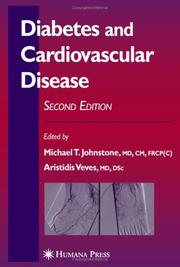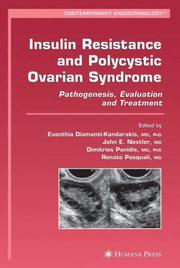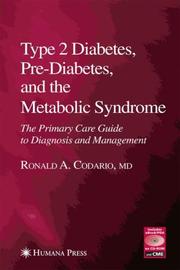| Listing 1 - 9 of 9 |
Sort by
|
Book
ISSN: 07246145 ISBN: 9783642018725 9783642018718 3642018718 Year: 2009 Volume: 115 Publisher: Heidelberg: Springer,
Abstract | Keywords | Export | Availability | Bookmark
 Loading...
Loading...Choose an application
- Reference Manager
- EndNote
- RefWorks (Direct export to RefWorks)
see table of contents
Chemistry. --- Biotechnology. --- Biochemistry, general. --- Pharmacy. --- Medicinal Chemistry. --- Carbohydrate Chemistry. --- Carbohydrates. --- Biochemistry. --- Chimie --- Biotechnologie --- Glucides --- Biochimie --- Pharmacie --- Chemistry --- Biochemistry --- Pharmacy --- Carbohydrates --- Biotechnology
Book
ISSN: 03401022 ISBN: 9783642151613 9783642151606 3642151604 Year: 2010 Volume: 294 Publisher: Berlin: Springer,
Abstract | Keywords | Export | Availability | Bookmark
 Loading...
Loading...Choose an application
- Reference Manager
- EndNote
- RefWorks (Direct export to RefWorks)
Knoevenagel Reaction of Unprotected Sugars, By M.-C. Scherrmann ; Carbohydrate-Based Lactones: Synthesis and Applications, By N. M. Xavier, A. P. Rauter, and Y. Queneau; Heterogeneously-Catalyzed Conversion of Carbohydrates, By K. De Oliveira Vigier and F. Jérôme; Palladium-Catalyzed Telomerization of Butadiene with Polyols: From Mono to Polysaccharides, By S. Bouquillon, J. Muzart, C. Pinel, and F. Rataboul; Monosaccharides, By J.A. Galbis and M.G. García-Martín; Natural Sources, By L. Weignerová and V. Kren; Synthesis and Applications of Ionic Liquids Derived from Natural Sugars; By C. Chiappe, A. Marra, and A. Mele
Chemistry. --- Organic Chemistry. --- Carbohydrate Chemistry. --- Sustainable Development. --- Agriculture. --- Renewable and Green Energy. --- Catalysis. --- Chemistry, Organic. --- Carbohydrates. --- Renewable energy sources. --- Sustainable development. --- Chimie --- Chimie organique --- Glucides --- Catalyse --- Agriculture --- Energies renouvelables --- Développement durable --- Produits chimiques de la biomasse --- Carbohydrates --- Biomass chemicals --- Biotechnology --- Biotechnologie --- Glucides - Biotechnologie --- Carbohydrates - Congresses --- Biomass chemicals - Congresses --- Biotechnology - Congresses
Book
ISBN: 9780387098418 9780387562087 9780387098401 Year: 2010 Publisher: Boston MA Springer US
Abstract | Keywords | Export | Availability | Bookmark
 Loading...
Loading...Choose an application
- Reference Manager
- EndNote
- RefWorks (Direct export to RefWorks)
Principles of Diabetes Mellitus, Second Edition is an important update to the comprehensive textbook first published in 2002 and reissued in 2004. It is written for physicians of all specialties who, on a daily basis, deal with an illness which has reached epidemic proportions. The book is also intended for medical students and investigators of all aspects of diabetes. The last five years have witnessed major developments in our understanding of diabetes and in therapeutic approaches to this disease. Thus, in addition to updating all chapters, the authors added eight new chapters to the second edition. Principles of Diabetes Mellitus, Second Edition covers diabetes in all of its aspects genetics, epidemiology, pathophysiology, clinical manifestations, therapy and prevention.
Pathology of the circulatory system --- Pathology of the metabolism --- Pathological endocrinology --- Orthopaedics. Traumatology. Plastic surgery --- Human medicine --- geneeskunde --- endocrinologie --- diabetes mellitus --- spoedgevallen --- cardiologie --- EHBO (eerste hulp bij ongelukken) --- Diabetes --- Diabetes Mellitus --- Diabetes Insipidus --- Glucose Intolerance --- Brittle diabetes --- Diabetes mellitus --- IDDM (Disease) --- Insulin-dependent diabetes --- Ketosis prone diabetes --- Type 1 diabetes --- Carbohydrate intolerance --- Endocrine glands --- Diabetic acidosis --- Glycosylated hemoglobin --- Diseases
Book

ISBN: 9784431779223 4431779213 9784431779216 9786612036873 1282036874 4431779221 Year: 2008 Publisher: [Tokyo] ; London : Springer,
Abstract | Keywords | Export | Availability | Bookmark
 Loading...
Loading...Choose an application
- Reference Manager
- EndNote
- RefWorks (Direct export to RefWorks)
The aim of this book is to provide experimental protocols covering many aspects of glycobiology, glycotechnology, and chemistry: biochemistry, molecular and cellular biology, genetics, physiology, and medicine. The protocols are all self-contained descriptions of the equipment and reagents needed, followed by details of the experimental procedure. In the post-genomic era, glycobiology is coming of age because more than half of proteins are glycosylated and the importance of sugar chains in various fields of life science research cannot be disregarded. Many scientists had not entered this area because glycobiology and glycoscience used to be considered difficult fields. This book, therefore, is presented much like a cookbook which can help scientists in fields other than glycobiology and glycoscience carry out research more easily.
Life Sciences. --- Biochemistry, general. --- Cell Biology. --- Animal Physiology. --- Immunology. --- Neurosciences. --- Food Science. --- Life sciences. --- Food science. --- Biochemistry. --- Cytology. --- Sciences de la vie --- Immunologie --- Neurosciences --- Biochimie --- Cytologie --- Glycoconjugates. --- Glycosylation. --- Glycosylation --- Glycomics --- Oligosaccharides --- Glycoconjugates --- Biochemistry --- Carbohydrate Biochemistry --- Organic Chemistry Processes --- Carbohydrate Metabolism --- Polysaccharides --- Carbohydrates --- Genomics --- Computational Biology --- Biochemical Processes --- Organic Chemistry Phenomena --- Chemical Processes --- Chemistry --- Genetics --- Metabolism --- Chemicals and Drugs --- Natural Science Disciplines --- Chemical Phenomena --- Metabolic Phenomena --- Biology --- Biological Science Disciplines --- Biochemical Phenomena --- Phenomena and Processes --- Disciplines and Occupations --- Animal Biochemistry --- Biology - General --- Human Anatomy & Physiology --- Health & Biological Sciences --- Physical Sciences & Mathematics --- Glycation --- Food --- Cell biology. --- Animal physiology. --- Biotechnology. --- Esterification --- Science --- Neural sciences --- Neurological sciences --- Neuroscience --- Medical sciences --- Nervous system --- Immunobiology --- Life sciences --- Serology --- Animal physiology --- Animals --- Anatomy --- Cell biology --- Cellular biology --- Cells --- Cytologists --- Biological chemistry --- Chemical composition of organisms --- Organisms --- Physiological chemistry --- Physiology --- Composition --- Food—Biotechnology.

ISBN: 9781588294135 1588294137 9781592599080 1617375497 9786610359172 128035917X 1592599087 Year: 2005 Publisher: Totowa, N.J.: Humana press,
Abstract | Keywords | Export | Availability | Bookmark
 Loading...
Loading...Choose an application
- Reference Manager
- EndNote
- RefWorks (Direct export to RefWorks)
In this second edition of Diabetes and Cardiovascular Disease, Michael T. Johnstone, MD, and Aristidis Veves, MD, have updated and expanded their very successful classic text to reflect new research, advances in clinical care, and the growing recognition that diabetes mellitus is a risk factor for cardiovascular disease. Written for the practicing clinician as a comprehensive review of diabetic vascular disease, the book both explains the basic pathophysiology of the disease and details the latest diagnostic and therapeutic approaches. On the science side, the authors have added new chapters on the role of estrogens in diabetic vascular disease, PARP activation and nitrosative stress in the development of the cardiovascular system, adiponectin and the cardiovascular system, and PPARs and their emerging role in vascular biology, inflammation, and atherosclerosis. On the clinical side, readers will find new chapters on percutaneous interventional therapy in cardiac and peripheral vascular disease, cardiovascular surgery in diabetic patients, and therapeutic interventions to improve endothelial function in diabetes. The chapters on diabetes and hypertension, heart failure, and coronary artery disease have been extensively revised, offering a cutting-edge discussion of retinopathy, nephropathy, neuropathy, and microcirculation of the diabetic foot. Authoritative and comprehensive, Diabetes and Cardiovascular Disease, Second Edition offers practicing physicians a cutting-edge scientific and clinical review of diabetic cardiovascular disease, providing both a deeper understanding of its pathology and all the day-to-day practical knowledge needed to treat patients effectively.
Diabetes Complications. --- Cardiovascular Diseases --- Diabetic angiopathies. --- Cardiovascular system --- Appareil cardiovasculaire --- etiology. --- Diseases --- Etiology. --- Maladies --- Etiologie --- Diabetic angiopathies --- Diabetes Complications --- Etiology --- etiology --- Cardiovascular system -- Diseases -- Etiology. --- Cardiovascular system -- Diseases. --- Diabetes. --- Diabetes Mellitus --- Endocrine System Diseases --- Medicine --- Health & Biological Sciences --- Clinical Endocrinology --- Diabetes --- Complications. --- Circulatory system --- Vascular system --- Complications and sequelae --- Medicine. --- Medicine & Public Health. --- Blood --- Circulation --- Brittle diabetes --- Diabetes mellitus --- IDDM (Disease) --- Insulin-dependent diabetes --- Ketosis prone diabetes --- Type 1 diabetes --- Carbohydrate intolerance --- Endocrine glands --- Diabetic acidosis --- Glycosylated hemoglobin --- Cardiovascular system - Diseases - Etiology --- Cardiovascular Diseases - etiology
Book
ISBN: 9781597451925 1588298752 9781588298751 9786611950699 1281950696 1597451924 162703935X Year: 2008 Publisher: Totowa, NJ : Humana Press : Imprint: Humana,
Abstract | Keywords | Export | Availability | Bookmark
 Loading...
Loading...Choose an application
- Reference Manager
- EndNote
- RefWorks (Direct export to RefWorks)
The prevalence of disorders related to insulin resistance has continued to increase throughout the developed and developing world. The world’s population has continued to become more obese and sedentary. Of great concern in the last decade is the extension of these deleterious lifestyle patterns to the pediatric population, leading to both obesity and the appearance of insulin resistance-related disorders in youth as well as adults. Insulin Resistance: Childhood Precursors and Adult Disease presents topics related to insulin resistance and its consequences across the lifespan. In the first section of the book examining epidemiology, the contributors review controversies over the definition of metabolic syndrome in adults and children, current knowledge regarding the epidemiology of insulin resistance in the pediatric population and the contributions of the prenatal and early childhood environment to the development of insulin resistance. The Second part of the book explores pathophysiology, with reviews of the techniques used to study insulin resistance, as well as current knowledge of the molecular and physiologic mechanisms of insulin resistance, including the contributions of adipose tissue and biochemical mediators. This section concludes with discussion of the relationship between insulin resistance and cardiovascular, endothelial, liver and gonadal disorders. The final section of the book explores the impact of exercise and weight loss medications on insulin resistance. Insulin resistance is likely to be the most important public health concern in many parts of the world in coming decades. This volume provides up-to-date reviews of these areas, providing the reader with a current perspective on issues in insulin resistance as they affect patients across the lifespan. The hope for Insulin Resistance: Childhood Precursors and Adult Disease is that it will spur continued interest in the topic on the part of clinicians and researchers, perhaps promoting new points of view and creative approaches to a daunting challenge.
Medicine & Public Health. --- Endocrinology. --- Internal Medicine. --- General Practice / Family Medicine. --- Pediatrics. --- Cardiology. --- Medicine. --- Family medicine. --- Internal medicine. --- Médecine --- Médecine familiale --- Médecine interne --- Cardiologie --- Endocrinologie --- Pédiatrie --- Diabetes -- Diet therapy. --- Health. --- Insulin resistance. --- Non-insulin-dependent diabetes. --- Insulin resistance --- Insulin Resistance --- Drug Resistance --- Hyperinsulinism --- Glucose Metabolism Disorders --- Pharmacological Phenomena --- Physiological Phenomena --- Metabolic Diseases --- Nutritional and Metabolic Diseases --- Phenomena and Processes --- Diseases --- Clinical Endocrinology --- Medicine --- Health & Biological Sciences --- Insulin tolerance --- Resistant diabetes --- Resistance to insulin --- General practice (Medicine). --- Diabetes. --- Diabetes --- Hormone resistance --- Insulin antibodies --- Complications --- Heart --- Internal medicine --- Paediatrics --- Pediatric medicine --- Children --- Family practice (Medicine) --- General practice (Medicine) --- Physicians (General practice) --- Medicine, Internal --- Hormones --- Brittle diabetes --- Diabetes mellitus --- IDDM (Disease) --- Insulin-dependent diabetes --- Ketosis prone diabetes --- Type 1 diabetes --- Carbohydrate intolerance --- Endocrine glands --- Diabetic acidosis --- Glycosylated hemoglobin --- Health and hygiene --- Endocrinology .

ISBN: 9781597454995 158829742X 9781588297426 161737752X 9786613693495 9786610972159 1597454990 1280972157 1280783109 Year: 2007 Publisher: Totowa, NJ : Humana Press : Imprint: Humana,
Abstract | Keywords | Export | Availability | Bookmark
 Loading...
Loading...Choose an application
- Reference Manager
- EndNote
- RefWorks (Direct export to RefWorks)
When puberty is precocious is a question in and of itself. The possibility that puberty is st starting earlier in children of the 21 century has become a contentious topic during the past few years. It has received much attention in the medical literature as well as the lay press. As research methods and interpretation of data vary between the studies that have attempted to resolve this issue, we are pleased to present the reader with three very different approaches to addressing the same question. We are thrilled to have experts in the field of basic science share the most up-to-date understanding of the mechanisms involved in the complicated interplay of factors that initiate puberty in different species. Also reviewed in the book are the many fascinating causes of precocity and new observations regarding the influence of the in utero environment and the affect of adoption from a developing country on pubertal timing. We have also included cutting edge discussions of endocrine disruptors, and the often overlooked psychosocial ramifications of precocious puberty. We believe that this book will be useful to primary care providers as well as specialists who deal with issues regarding abnormalities of puberty and reproduction. The topics covered in these chapters will provide the reader with a solid understanding of the diverse and fascinating causes of precocious puberty and different treatment options.
Medicine & Public Health. --- Pediatrics. --- Endocrinology. --- Diabetes. --- Internal Medicine. --- Medicine. --- Internal medicine. --- Médecine --- Médecine interne --- Diabète insulinodépendant --- Endocrinologie --- Pédiatrie --- Precocious puberty. --- Puberty. --- Precocious puberty --- Endocrine Disruptors --- Physiology --- Puberty, Precocious --- Psychosexual Development --- Personality Development --- Physiological Effects of Drugs --- Gonadal Disorders --- Psychoanalytic Theory --- Biological Science Disciplines --- Environmental Pollutants --- Toxic Actions --- Personality --- Endocrine System Diseases --- Psychological Theory --- Pharmacologic Actions --- Natural Science Disciplines --- Chemical Actions and Uses --- Disciplines and Occupations --- Diseases --- Behavior and Behavior Mechanisms --- Psychological Phenomena and Processes --- Chemicals and Drugs --- Psychiatry and Psychology --- Pediatrics --- Medicine --- Health & Biological Sciences --- Precognition. --- Premature puberty --- Pubertas praecox --- Second sight --- Extrasensory perception --- Endocrine glands --- Pediatric endocrinology --- Puberty --- Medicine, Internal --- Brittle diabetes --- Diabetes mellitus --- IDDM (Disease) --- Insulin-dependent diabetes --- Ketosis prone diabetes --- Type 1 diabetes --- Carbohydrate intolerance --- Diabetic acidosis --- Glycosylated hemoglobin --- Internal medicine --- Hormones --- Paediatrics --- Pediatric medicine --- Children --- Health and hygiene --- Endocrinology .

ISBN: 9781597453103 1588297632 9781588297631 1617377635 9786610971879 1280971878 1597453102 Year: 2007 Publisher: Totowa, N.J. : Paisley : Humana ; Quantum [distributor],
Abstract | Keywords | Export | Availability | Bookmark
 Loading...
Loading...Choose an application
- Reference Manager
- EndNote
- RefWorks (Direct export to RefWorks)
Despite dizzyingly fast-paced advances over the past two decades, even the definition of Polycystic Ovarian Syndrome (PCOS) remains in dispute. Insulin Resistance and Polycystic Ovarian Syndrome: Pathogenesis, Evaluation, and Treatment highlights the recent transition of PCOS from an infertility disorder with a diagnosis based on ovarian tissue histology to a more complex clinical entity, a metabolic disorder in which insulin resistance plays a central role. With an expert panel of authors, each chapter provides an up-to-date and balanced overview of PCOS, paying special attention to the central role of insulin resistance in the syndrome’s pathogenesis and in the management of its reproductive and metabolic abnormalities. Comprehensive and thought-provoking, Insulin Resistance and Polycystic Ovarian Syndrome: Pathogenesis, Evaluation, and Treatment is an invaluable resource for endocrinologists, gynecologists, and internists eager to learn more about this controversial and challenging disease.
Medicine & Public Health. --- Endocrinology. --- Internal Medicine. --- Diabetes. --- Obstetrics/Perinatology. --- Medicine. --- Obstetrics. --- Internal medicine. --- Médecine --- Obstétrique --- Médecine interne --- Diabète insulinodépendant --- Endocrinologie --- Insulin resistance. --- Polycystic ovary syndrome -- Endocrine aspects. --- Polycystic ovary syndrome --- Insulin resistance --- Insulin Resistance --- Polycystic Ovary Syndrome --- Metabolic Syndrome X --- Drug Resistance --- Ovarian Cysts --- Metabolic Diseases --- Hyperinsulinism --- Ovarian Diseases --- Cysts --- Glucose Metabolism Disorders --- Pharmacological Phenomena --- Nutritional and Metabolic Diseases --- Physiological Phenomena --- Diseases --- Adnexal Diseases --- Gonadal Disorders --- Neoplasms --- Endocrine System Diseases --- Phenomena and Processes --- Genital Diseases, Female --- Female Urogenital Diseases --- Female Urogenital Diseases and Pregnancy Complications --- Gynecology & Obstetrics --- Clinical Endocrinology --- Medicine --- Health & Biological Sciences --- Endocrine aspects --- Endocrine aspects. --- Insulin tolerance --- Resistant diabetes --- Resistance to insulin --- PCOD (Gynecology) --- PCOS (Gynecology) --- Polycystic ovarian disease --- Polyfollicular ovarian disease --- Sclerocystic ovarian degeneration --- Sclerocystic ovaries --- Sclerocystic ovary syndrome --- Stein-Leventhal syndrome --- Diabetes --- Hormone resistance --- Insulin antibodies --- Ovaries --- Syndromes --- Hyperandrogenism --- Complications --- Obstetrics/Perinatology/Midwifery. --- Maternal-fetal medicine --- Brittle diabetes --- Diabetes mellitus --- IDDM (Disease) --- Insulin-dependent diabetes --- Ketosis prone diabetes --- Type 1 diabetes --- Carbohydrate intolerance --- Endocrine glands --- Diabetic acidosis --- Glycosylated hemoglobin --- Medicine, Internal --- Internal medicine --- Hormones --- Endocrinology .

ISBN: 9781588294715 1588294714 9781592599325 9786610358106 1280358106 159259932X Year: 2005 Publisher: Totowa, N.J. : Humana Press,
Abstract | Keywords | Export | Availability | Bookmark
 Loading...
Loading...Choose an application
- Reference Manager
- EndNote
- RefWorks (Direct export to RefWorks)
Diagnosing and managing type 2 diabetes constitutes a tremendous challenge to the primary care provider confronting a rapidly growing patient population and a multiplicity of new scientific insights and therapeutic strategies. In Type 2 Diabetes, Pre-Diabetes, and the Metabolic Syndrome: The Primary Care Guide to Diagnosis and Management, Ronald A. Codario, MD-a well-known and highly respected authority on diabetes in private practice for over 30 years-details for today's busy primary care practitioners the state-of-the-art in diagnosing and managing diabetes as well as in reducing patient risk factors. Using an evidence-based approach, Dr. Codario explains, in simple clinical terms that avoid the complexity of much larger textbooks, our latest understanding of the pathophysiology of diabetes, its treatment with insulin and oral agents, and the management of its risk factors. The author also extensively reviews such major topics as the metabolic syndrome, the role of exercise and nutrition, and the key issues associated with the use of herbs and nutraceuticals. Illustrative case studies in diabetes management, an outstanding bibliography of suggested readings, and extensive chapter subheadings for quick reference make this book a practical, easy-to-read guide for physicians dealing with this killer disease. A value-added compact disk contains a companion e-book version of the book for downloading and use in the reader's PC or PDA. Also included are continuing medical education (CME) questions that provide the opportunity to acquire up to a maximum of 10 AMA/PRA category 1 CME credits. For the past 15 years, the author has given CME lectures on diabetes throughout the country. State of the art and highly practical, Type 2 Diabetes, Pre-Diabetes, and the Metabolic Syndrome: The Primary Care Guide to Diagnosis and Management offers practitioners an authoritative, well-honed approach to the successful management of their diabetic patients.
Primary Health Care. --- Diabetes Mellitus, Type 2. --- Prediabetic State. --- Insulin resistance. --- Primary care (Medicine) --- Non-insulin-dependent diabetes. --- Soins de santé primaires --- Diabète non insulinodépendant --- Primary care (Medicine). --- Non-insulin-dependent diabetes --- Insulin resistance --- Prediabetic State --- Primary Health Care --- Diabetes Mellitus, Type 2 --- Diabetes Mellitus --- Comprehensive Health Care --- Patient Care Management --- Glucose Metabolism Disorders --- Endocrine System Diseases --- Metabolic Diseases --- Health Services Administration --- Diseases --- Nutritional and Metabolic Diseases --- Health Care --- Clinical Endocrinology --- Medicine --- Health & Biological Sciences --- Primary medical care --- Insulin tolerance --- Resistant diabetes --- Resistance to insulin --- Adult onset diabetes --- Ketosis resistant diabetes --- Maturity onset diabetes --- NIDDM (Diabetes) --- Noninsulin-dependent diabetes --- Stable diabetes --- Type II diabetes --- Type 2 diabetes --- Medicine. --- General practice (Medicine). --- Diabetes. --- Medicine & Public Health. --- General Practice / Family Medicine. --- Medical care --- Diabetes --- Hormone resistance --- Insulin antibodies --- Complications --- Family medicine. --- Family practice (Medicine) --- General practice (Medicine) --- Physicians (General practice) --- Brittle diabetes --- Diabetes mellitus --- IDDM (Disease) --- Insulin-dependent diabetes --- Ketosis prone diabetes --- Type 1 diabetes --- Carbohydrate intolerance --- Endocrine glands --- Diabetic acidosis --- Glycosylated hemoglobin --- Type 2 diabetes.
| Listing 1 - 9 of 9 |
Sort by
|

 Search
Search Feedback
Feedback About UniCat
About UniCat  Help
Help News
News